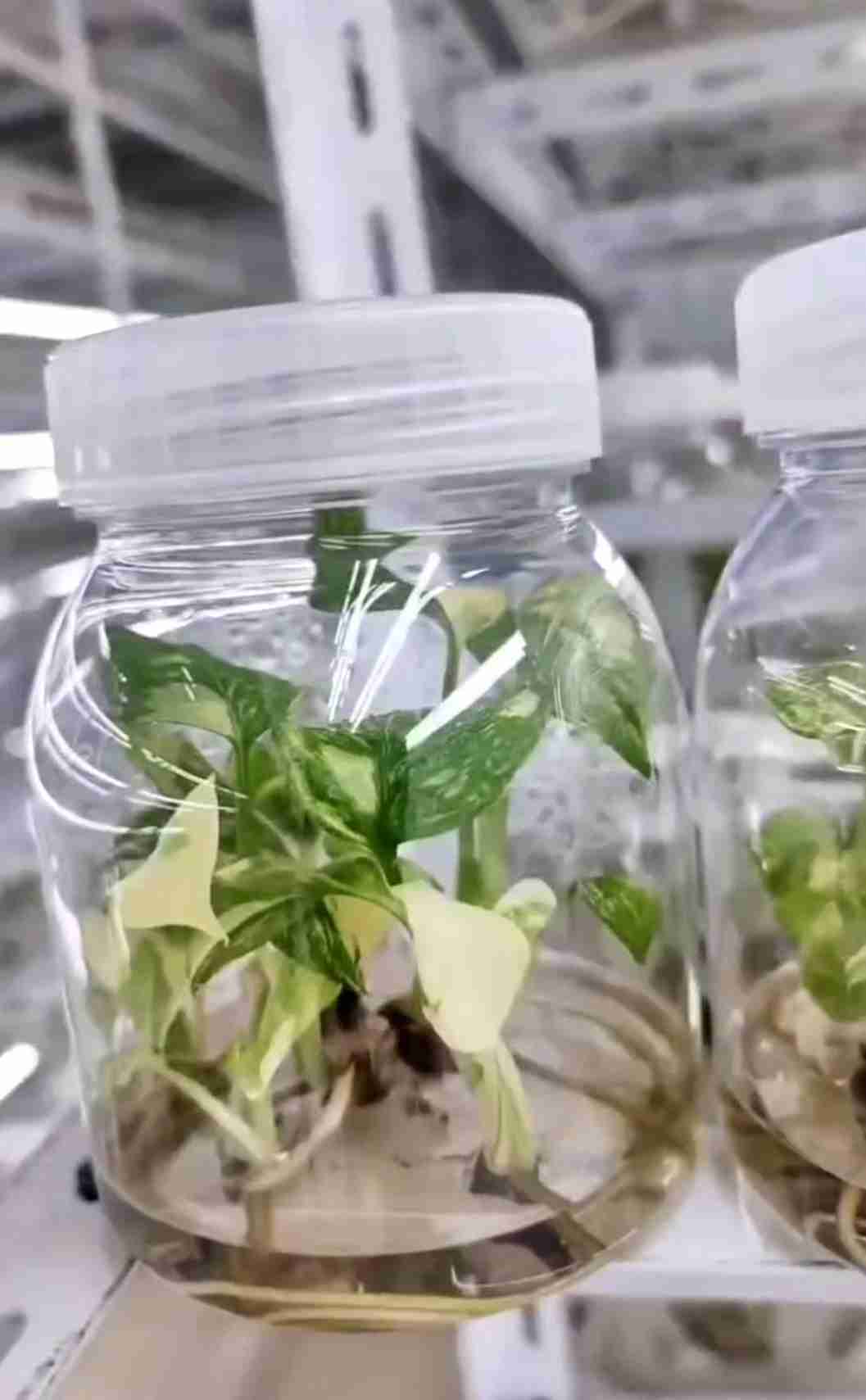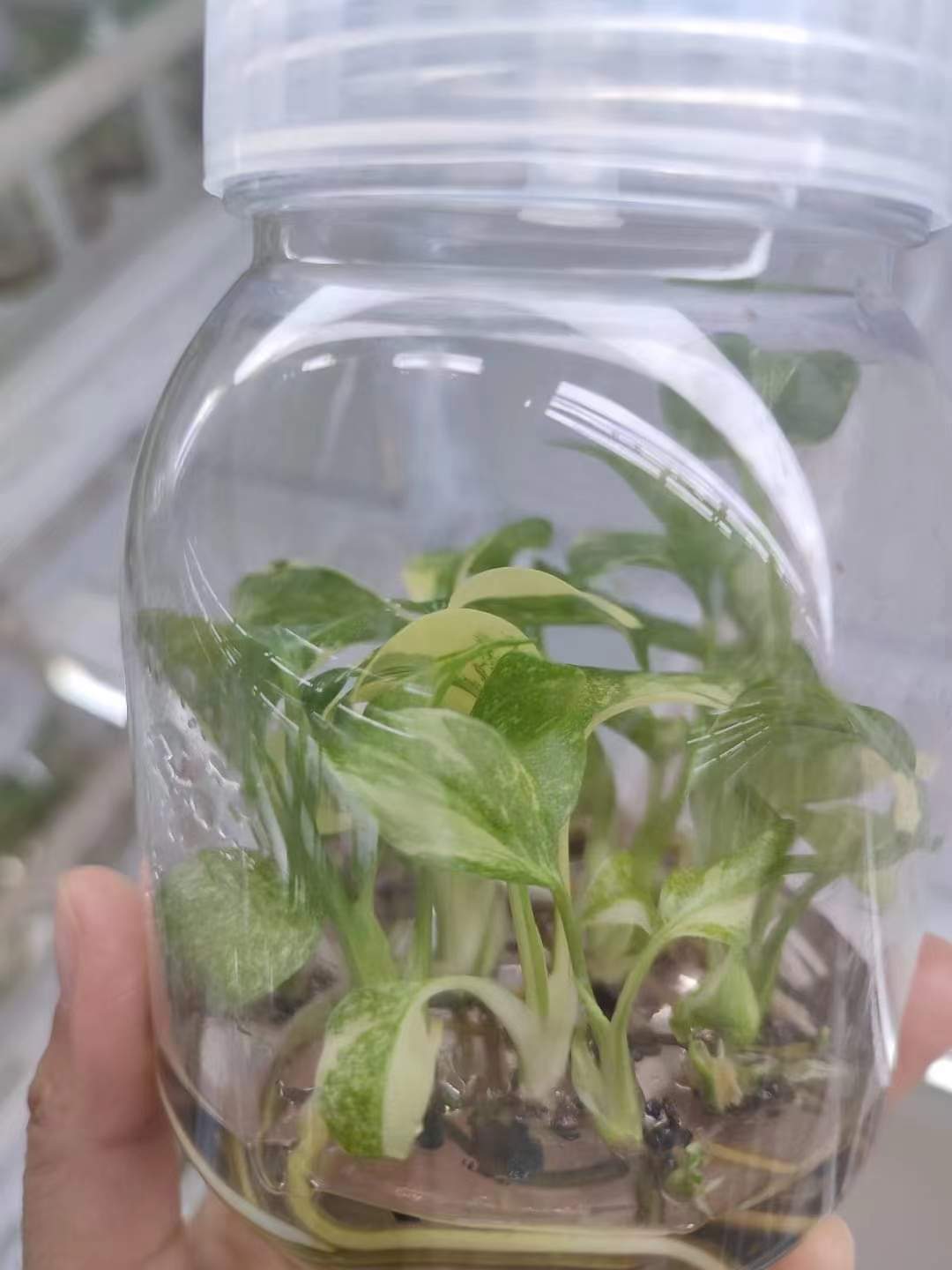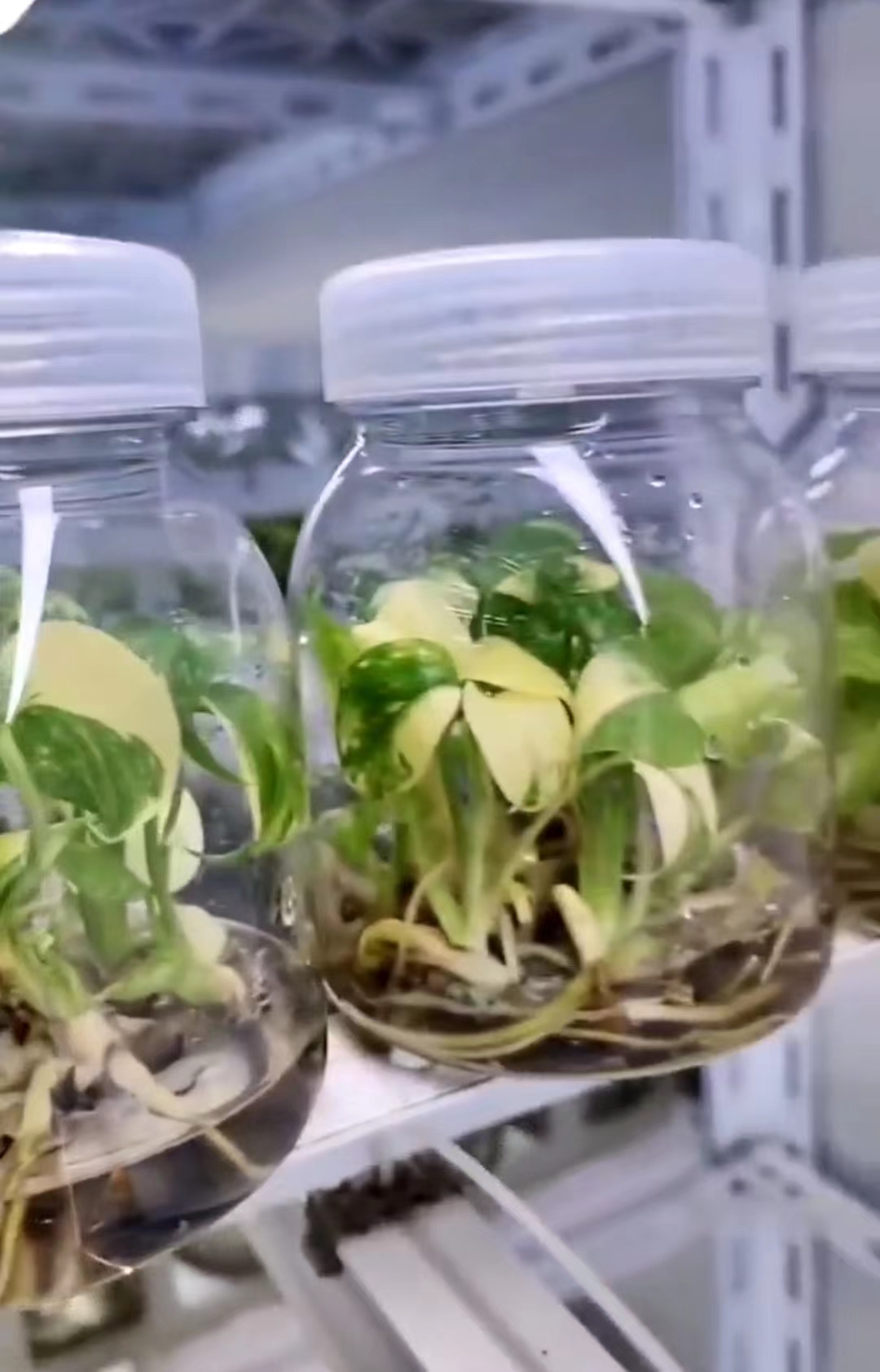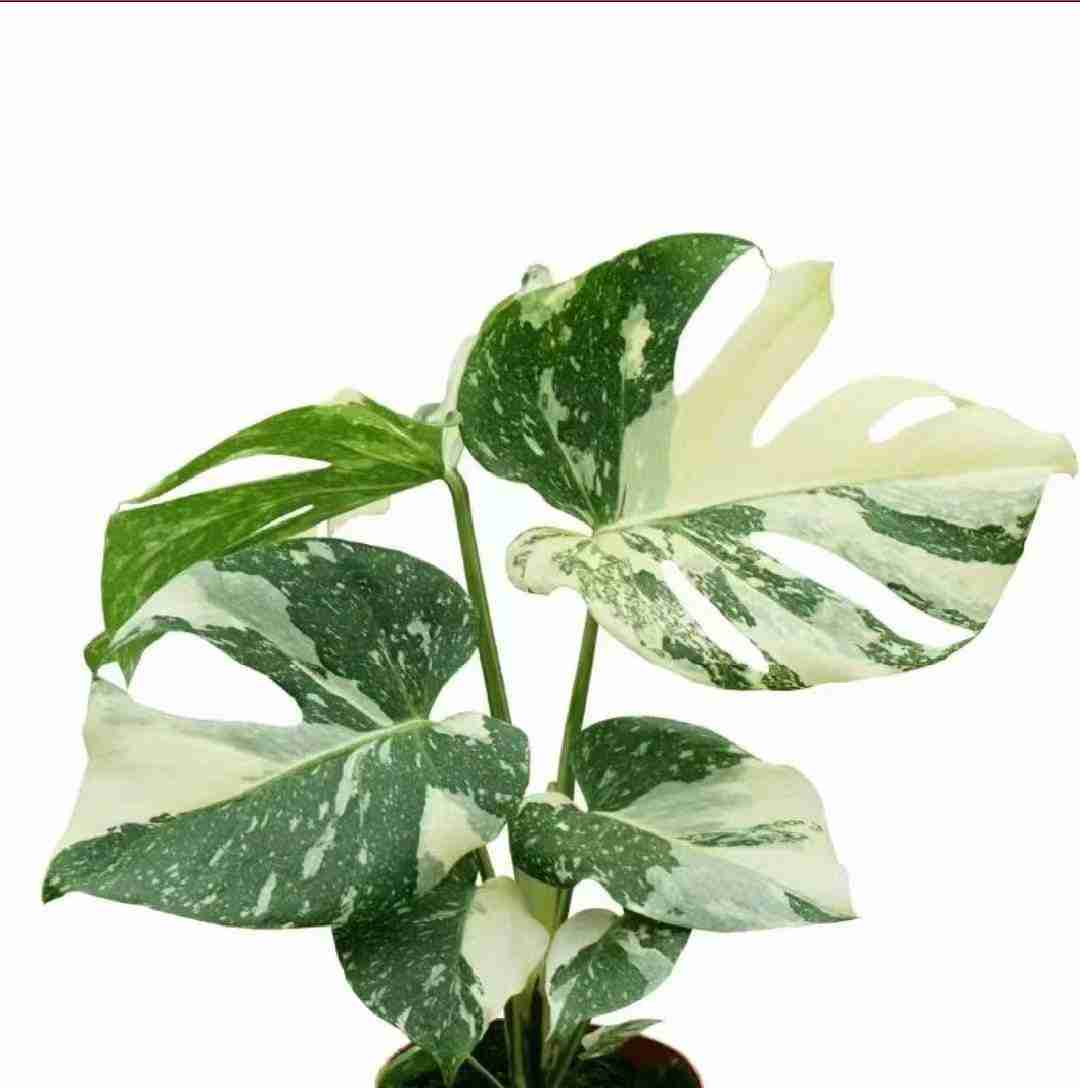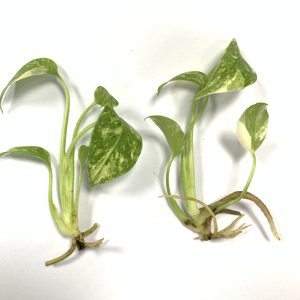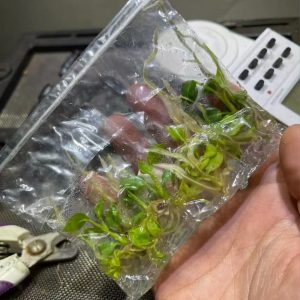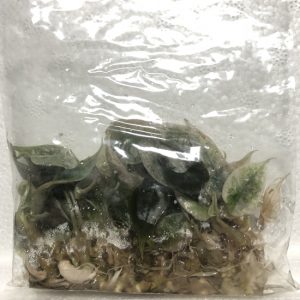Light :Bright indirect light
Temperature: 64-86˚F(18-30˚C)
Humidity: Medium-high (Above 60%)
Care Level: Medium
Toxicity :Toxic
Watering
Over-watering is far worse than under-watering for the Thai. Root rot is your enemy (and unfortunately Thai are more prone to root rot). BUT they aren’t as tolerant of drying out like their green Monstera Deliciosa cousins either, so you need to find the right balance.
Wait till the top half or so of the soil is dry before watering again. Don’t let them fully dry out. If you’re worried, a cheap water meter helps with peace of mind as you can push the probes down to check below the surface easily, but if budget allows, consider grabbing a Sustee or Crew Soil Sensor. Something you can leave in your plant and tell at a glance what the moisture level is down at root level.
Light
Light is another area the Monstera Thai Constellation differs from her all-green buddies. Variegated plants in general need to work harder to photosynthesize. Yep, that rather important ‘vital for life’ requirement. Since light is a biggie for photosynthesis, your Thai needs more of it than the all-green Monstera to maintain those variegated leaves, especially ones with bigger variegated sections.
Go for a position with plenty of bright light. Remember the variegated sections lack chlorophyll (otherwise they would be green), which means they can’t absorb light and are more photo-sensitive. Low light is not recommended. Better to go for medium to bright light.
Ideally that light should not be only from one direction though, as like her green cousin, she’ll reach for the light and can become more leggy and less leafy in low light. If you can’t help the stronger light from one direction, quarter turn your Thai about monthly and she should be sweet.
Unlike some highly-variegated plants though, the Thai can handle some direct sunlight. Especially the greener more speckled and freckled leaves without big white patches. Those big white patches though? I’d keep clear of direct sun for fear of sunburn. Dappled, moving light is always better and morning sun or winter sun is better than the more intense afternoon or summer sun.
Stay clear of direct sun all together if unsure, but if the perfect spot for your Thai gets early morning sun in summer, or weaker daytime sun in winter, you should be fine. Just stay out of the sun for longer lengths of time, and no super-harsh daytime and afternoon sun direct in summer. Think gentle sun and you’ll be sweet.
Humidity
Monstera Thai Constellation have similar humidity requirements to their green Monstera Deliciosa fam. I’d call them ‘medium’ on the humidity scale. In a typical kiwi summer no extra humidity should be needed unless you live in a very dry region. It’s plenty humid for our lucky tropical indoor plants in general in NZ.
In winter or if you have a heat pump, DVS. HRV or fireplace going, you may need to consider running a humidifier. Look out for for crispy, dry, brown tips or edges as a sign extra humidity is required. For humidity I find a pebble tray doesn’t do much, nor does misting. Aim for humidity above 60%. Get a hygrometer to find out what your level is now, and consider a plant humidifier if you find humidity is too low.
Tip for new arrivals: Thai Monstera typically start out in a lab environment if grown from tissue culture, then often moved to an indoor nursery with plenty of warmth and humidity, so they become used to a higher humidity environment. When you first get yours home, maintaining that warmth and higher humidity, at least for the first couple of weeks, will help your Thai settle in sooner with less stress, so less chance of disease or leaf loss – or those dreaded brown patches!

